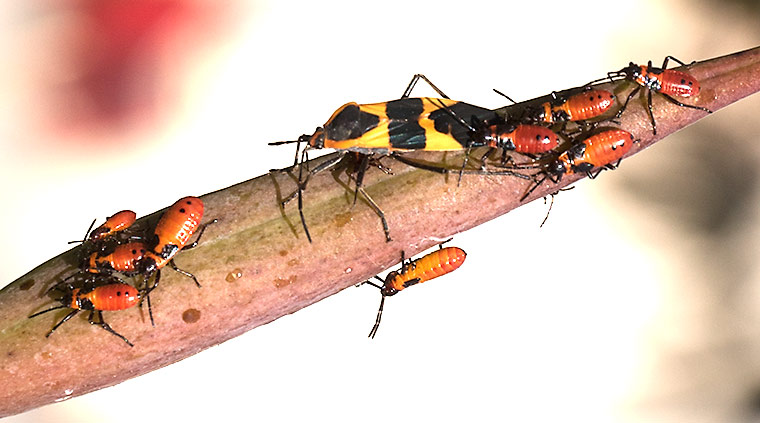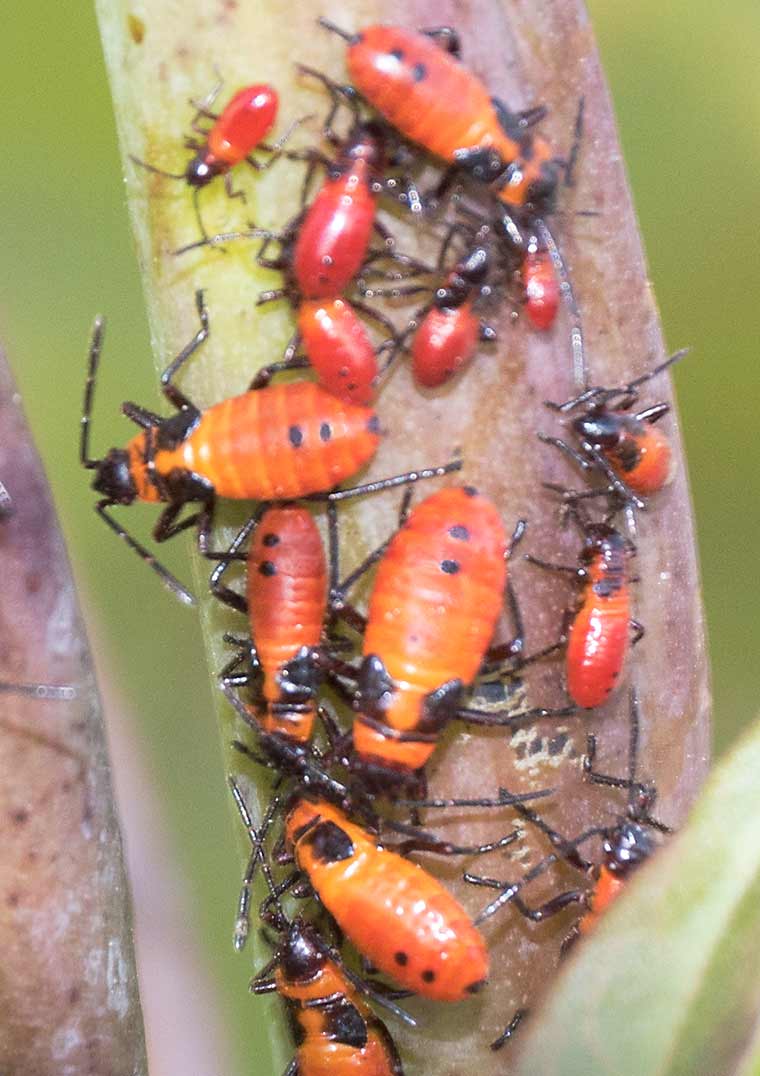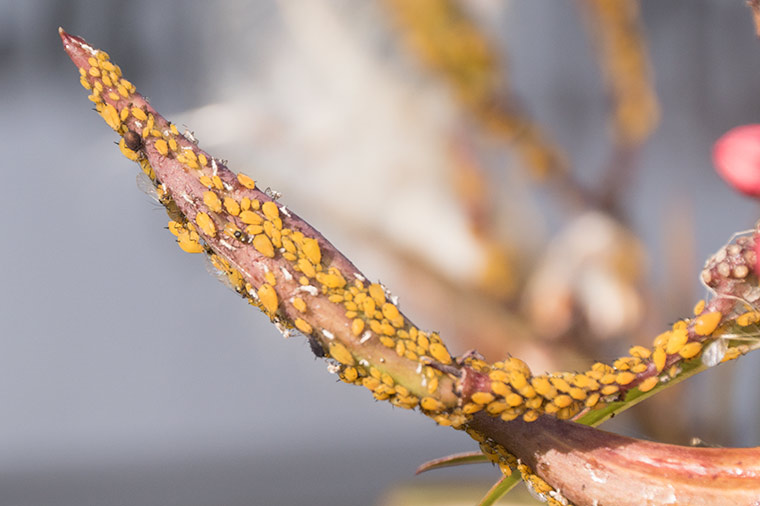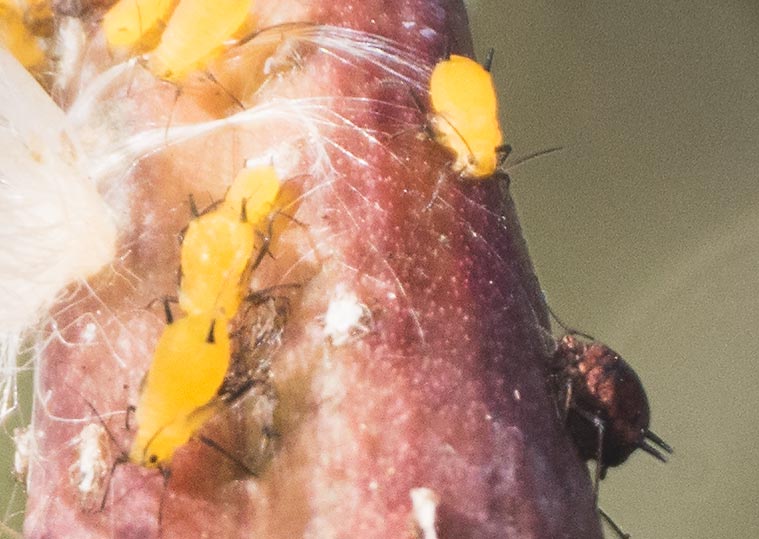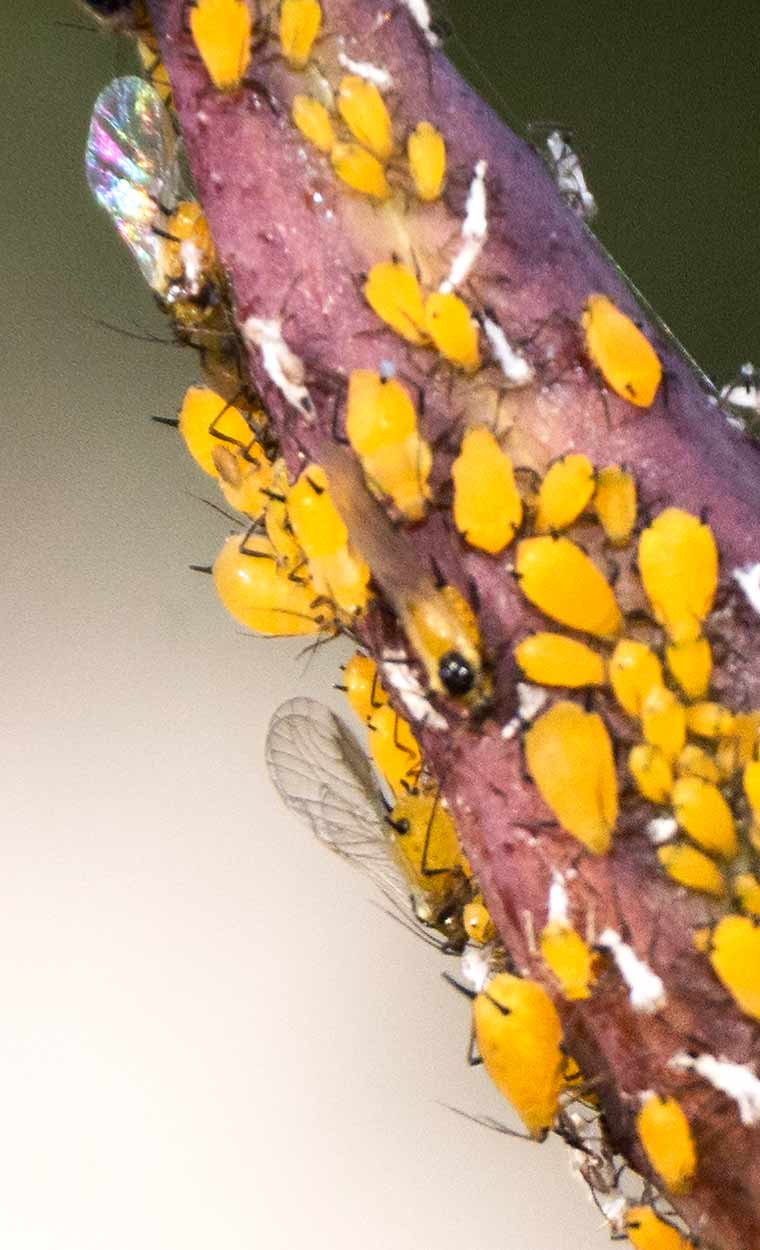Here are some more photographs of the milkweed plant in Beaufort, South Carolina that I featured in my last post.
Every plant has some creatures that want to do it harm. Plants cannot run away as animals do, so they have evolved various sorts of defenses. Milkweeds produce cardiac glycosides which are bitter and toxic to many potential predators (including humans). However, a few insects are resistant to these compounds. They are able to sequester the bitter, toxic compounds in their bodies. This ability in turn makes these insects repellant to creatures, such as birds, that would try to eat them. These toxic insects advertise the fact that they are toxic by their bright colors, usually yellow and black or red and black. Birds learn to avoid these color combinations and the insects are not eaten.
This photograph shows a milkweed pod infested with Large Milkweed Bugs (Oncopeltus fasciatus). At first glance, one would think that two species are present here, because the large adult looks quite different from the juveniles that surround it.
These bugs have mouth parts that form a proboscis which resembles a hypodermic needle. The proboscis is only about 0.1 mm (1/25 of an inch) in diameter, but it has separate channels for injection of saliva, which helps to solubilize plant material, and for sucking up the resulting plant juices. This species preys mainly on the developing seeds of the milkweed.
This photograph shows several juvenile Large Milkweed Bugs at various stages of development. This species undergoes gradual development. There is no complete metamorphosis as one sees in butterflies and moths (i.e. no pupal stage). Instead the egg hatches into a form called a nymph. The nymph sheds it skin several times as it grows larger. Each stage looks progressively more like the adult. This form of development is found in many familiar insects, such as grasshoppers.
In this photograph the black structures on the “shoulders” of the larger nymphs are the developing wings. Adults have functional wings and are able to fly away to colonize new sites.
Here is another milkweed pod on the same plant. It is being attacked by a different insect.
A close up shows that these are Oleander Aphids (Aphis nerii). They also have a proboscis which they insert into the milkweed pod to suck up plant juices, primarily from the phloem (a tissue that transports sugars in the plant). These aphids prey on a variety of garden plants, including, naturally, Oleander (Nerium oleander). They are characterized by their bright yellow color and the two spines which protrude from their abdomen. Like the Large Milkweed Bug, these aphids sequester the bitter, poisonous cardiac glycosides in their bodies, making them repellant to birds and spiders.
The dark brown aphid on the lower right is a “mummy”, which results from attack by a tiny parasitic wasp (Lysiphlebus testaceipes). The wasp larva eats the aphid from the inside, and when it is mature it escapes through a hole it produces in the back of the aphid. The cardiac glycosides in the aphid do not appear to harm the wasp larva.
Oleander Aphids occur in tropical and warmer temperate regions all over the world. Their usual method of reproduction is parthenogenesis. This means they do not lay eggs, but “lay” nymphs which are ready to start development. The nymphs are thus clones of the mother. Apparently, no males are present in wild populations. Most of the adults do not have wings, but when conditions get crowded, winged adults may be produced. Two of them can be seen in the photograph above. The winged adults can fly off to colonize new hosts.

